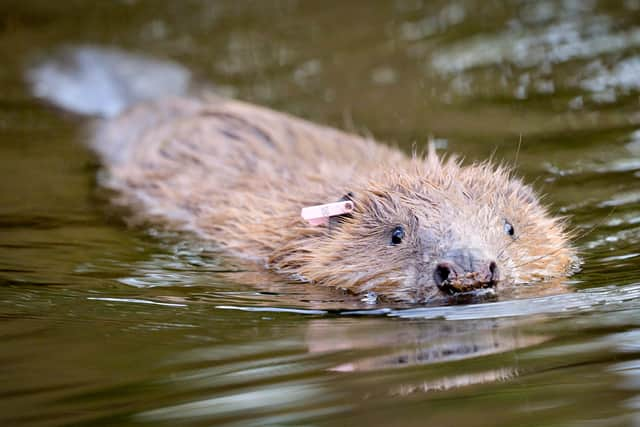Beavers: Plan to reintroduce beaver families to UK's biggest national park gets the go-ahead
and live on Freeview channel 276
Up to six families of beavers will make a glorious return to the UK's biggest national park in the next year - and they are expected to bring huge ecological and biodiversity benefits.
NatureScot has this week approved a licence application from the Cairngorms National Park Authority to release the beaver families at a range of sites in the upper River Spey catchment. Beavers were hunted to extinction in Britain around 400 years ago, but are now being reintroduced across England and Scotland. London's very first pair were released in the northern borough of Enfield last year, and the project has already paid dividends - with a brand new kit spotted paddling with its parents over the summer.
Advertisement
Hide AdAdvertisement
Hide AdThe River Spey will be the fifth Scottish river catchment to welcome back beavers, with populations already established in Tayside, Knapdale, Loch Lomond, and on the Forth. NatureScot says the area was found to be "highly favourable" to reintroducing the species, with a low risk of beavers and humans coming into conflict - and it could bring a host of environmental benefits to the Cairngorms National Park.


NatureScot's head of wildlife management Donald Fraser said: “This decision marks a significant milestone for beaver restoration in Scotland, bringing this keystone species back to one of our biggest river catchments with huge potential for beavers to contribute to habitat restoration and biodiversity enhancement in the Cairngorms National Park."
Mr Fraser said they also appreciated and understood both the support and legitimate concerns articulated by farmers and crofters through the consultation process. "We are satisfied that the monitoring and mitigation plans set out by the Cairngorms National Park Authority, alongside our existing Beaver Mitigation Scheme, will sufficiently address any potential conflicts that may arise," he added.
The new licence will permits the release of up to six beaver families - or pairs with dependent young - at the agreed-upon sites in the first year. It also allows for future additional releases at other sites over the next five years, up to a total of 15 beaver families.
Advertisement
Hide AdAdvertisement
Hide AdThe beavers will be trapped and taken under licence from areas where they are having a negative impact on land used for farming and where mitigation measures have not been successful or are not possible, NatureScot said. All animals will undergo appropriate health screening before being released to their new home.
The Cairngorms National Park, in northeast Scotland, is the biggest in the UK, making up more than 4,500 square kilometres. The mountainous region provides a variety of habitats to many unique and threatened species, including golden eagles, capercaillie, mountain hares, and snow buntings.
Comment Guidelines
National World encourages reader discussion on our stories. User feedback, insights and back-and-forth exchanges add a rich layer of context to reporting. Please review our Community Guidelines before commenting.
